Upgrading your road bike's wheelset can significantly enhance your cycling performance, providing not only improved speed and efficiency but also better handling and ride quality. A well-chosen wheelset upgrade can be one of the most impactful modifications you make to your bike, transforming your riding experience.
Benefits of Upgrading Your Wheelset:
1. Increased Speed and Efficiency: Lighter wheels reduce rotational weight, making it easier to accelerate and maintain speed. Aerodynamic wheelsets minimize air resistance, allowing for smoother, faster rides.
2. Enhanced Ride Quality: High-quality wheelsets offer better responsiveness and smoother handling. They can absorb road vibrations more effectively, leading to a more comfortable ride over long distances.
3. Improved Durability: Upgrading to a robust wheelset ensures greater reliability and longevity, especially crucial for riders tackling various terrains and conditions.
Key Factors to Consider When Choosing a New Wheelset:
1. Material: Wheelsets are commonly made from carbon or alloy. Carbon wheels are lighter and more aerodynamic, ideal for competitive cyclists. Alloy wheels, such as those from TRIFOXBIKE, offer a great balance of performance and affordability, making them a favorite among many cyclists.
2. Rim Depth: Deeper rims provide aerodynamic benefits, making them suitable for flat terrains and time trials. However, they may be susceptible to crosswinds. Shallower rims are more versatile and handle better in varied conditions.
3. Spoke Count and Pattern: More spokes generally mean a stronger wheel, which is beneficial for heavier riders or rough terrain. The pattern and tension affect wheel strength and aerodynamics.
4. Compatibility: Ensure the new wheelset is compatible with your existing bike components, such as the cassette and brakes (rim or disc).
Tips for Installation and Maintenance:
1. Professional Installation: Have your new wheelset installed by a professional or follow detailed instructions to ensure proper alignment and tension, which are critical for performance and safety.
2. Regular Maintenance: Keep your wheels clean and free of debris. Regularly inspect for any signs of wear or damage, and ensure spokes are properly tensioned.
3. Tire Pressure: Maintain optimal tire pressure for your new wheels to enhance performance and prevent flats.
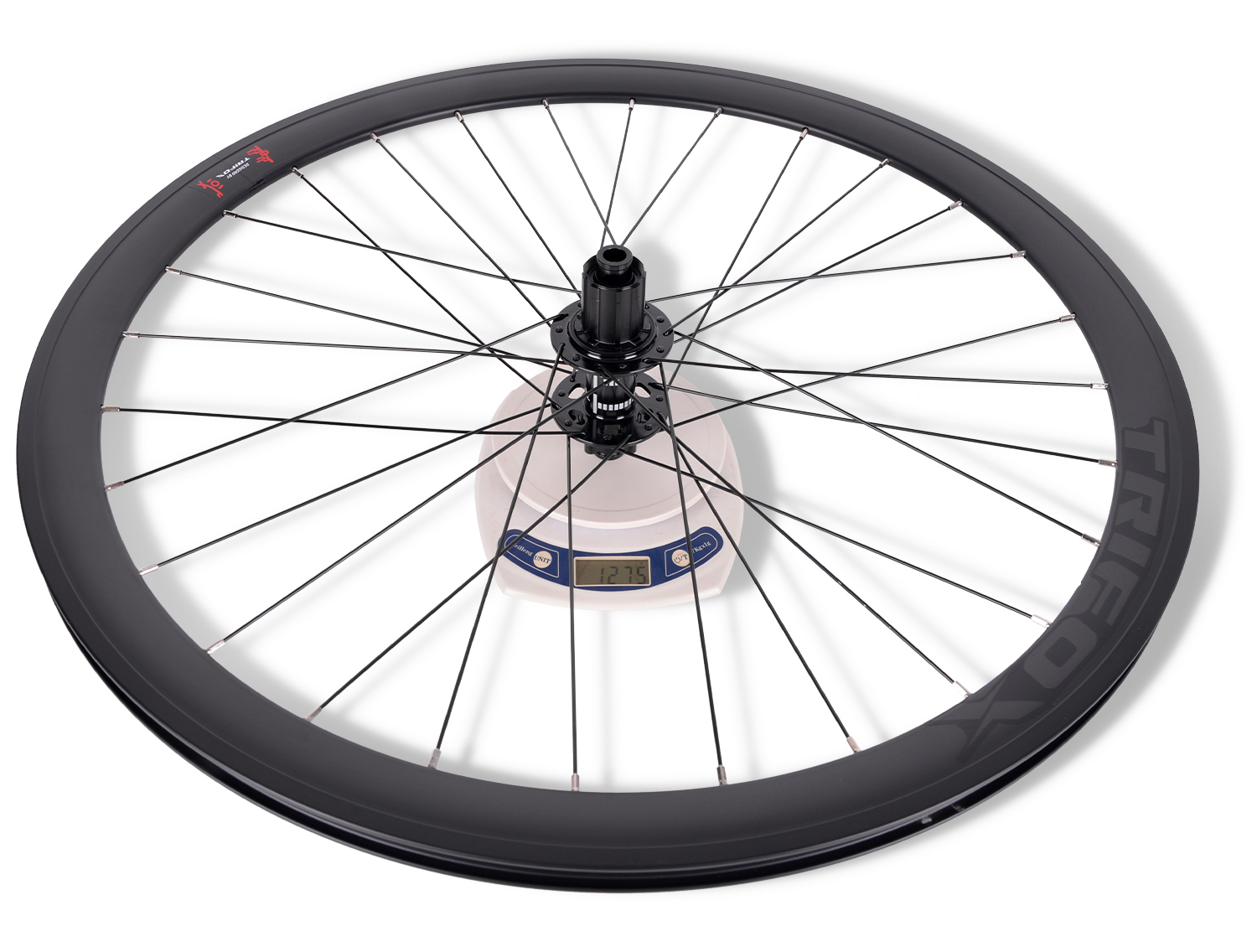
TRIFOXBIKE's alloy road wheels are an excellent example of a high-quality upgrade. Designed for reliability and performance, these wheels can elevate your cycling experience significantly. To explore TRIFOXBIKE's alloy road wheels and find the perfect fit for your cycling needs, visit their product page: TRIFOXBIKE Alloy Road Wheels.
By carefully selecting and maintaining your upgraded wheelset, you can enjoy a substantial boost in your road biking performance, making every ride faster, smoother, and more enjoyable.
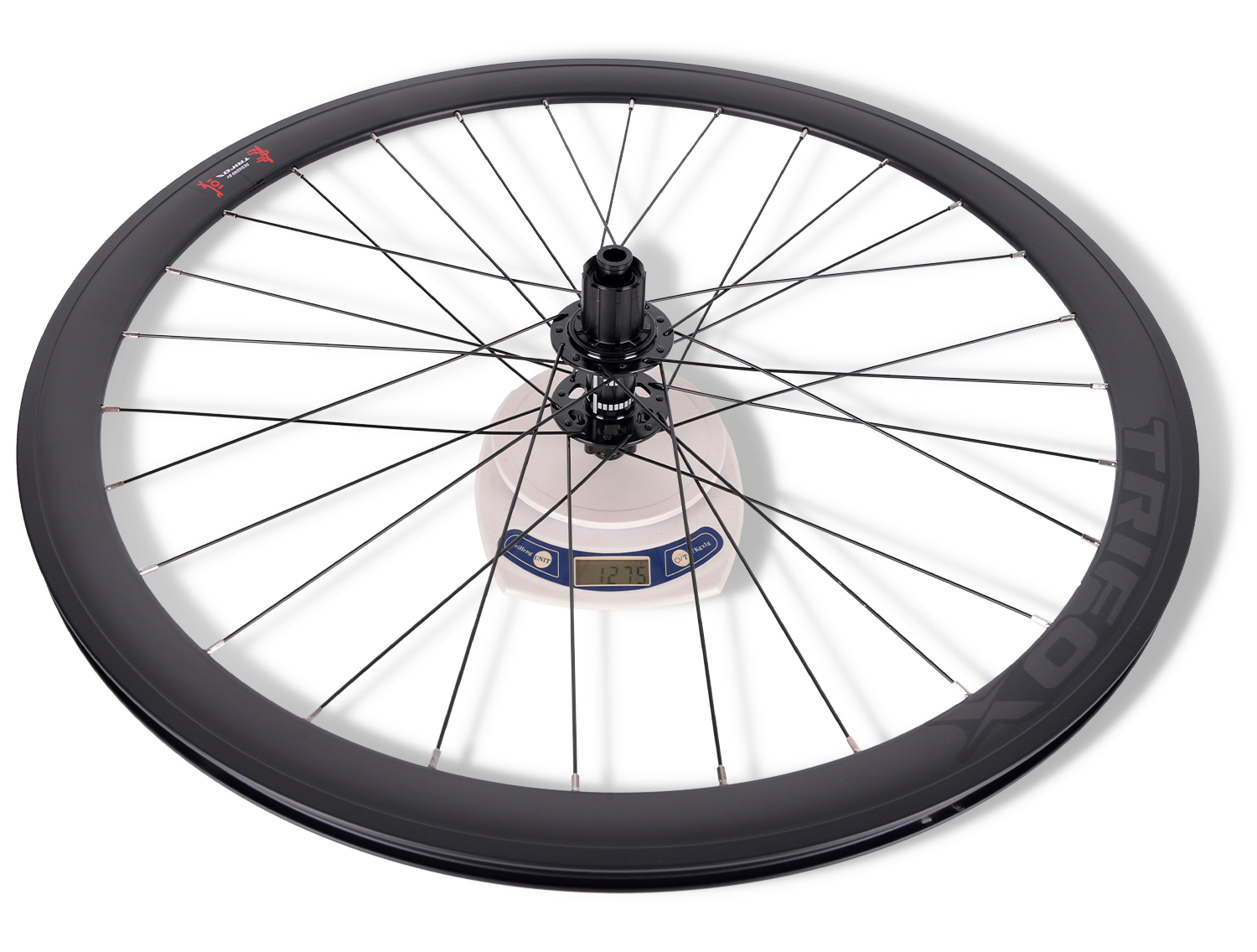

Selecting the perfect XS frame road bike is crucial for cyclists who seek efficiency, comfort, and optimal performance.
The frame size is one of the most important factors affecting how well you can ride, especially for those with smaller builds. Here's how to ensure you choose the right XS frame for an efficient ride.
1. Importance of Frame Size:
The frame size directly impacts your cycling efficiency. An XS frame is designed to cater to shorter riders, offering better balance and control. A well-fitted frame ensures that your energy is effectively transferred to the bike, enhancing speed and reducing fatigue over long rides. Riding an incorrectly sized bike can lead to discomfort and inefficient pedaling, making size selection vital.
2. Tips for Choosing the Right XS Frame:
Measure Your Inseam: Start by measuring your inseam to determine the correct standover height for the bike. This ensures you can comfortably mount and dismount the bike.
Consider Reach and Stack: Ensure the reach (distance from the saddle to the handlebars) and stack (height of the handlebars) are appropriate for your height. This affects your riding posture and comfort.
Test Ride: If possible, test ride different models to see which frame geometry feels most comfortable. Pay attention to how the bike handles and your ease of maneuverability.
Consult Experts: Seek advice from cycling experts or bike shop professionals who can provide personalized recommendations based on your body dimensions and riding style.
3. Impact on Comfort and Performance:
A properly fitted XS frame enhances comfort by reducing strain on your back and neck, allowing for better focus and endurance. It also improves performance by ensuring you can maintain an aerodynamic position, especially crucial for long-distance road cycling. An efficient ride means you can enjoy cycling longer and faster with less effort.

TRIFOXBIKE offers an impressive range of XS frame road bikes that cater to the needs of smaller riders. Their bikes are designed with precision, focusing on lightweight materials and advanced ergonomics to ensure maximum efficiency and comfort. To explore TRIFOXBIKE's selection of road bikes and find the perfect fit for an efficient ride, visit their product page: TRIFOXBIKE Road Bikes.
By choosing the right XS frame road bike, you can achieve a harmonious balance between speed, comfort, and performance, making your cycling experience both enjoyable and efficient.
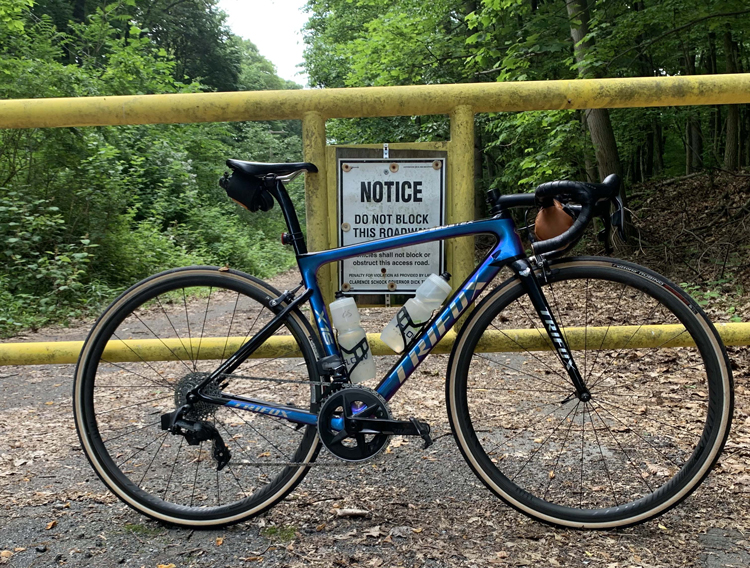
When it comes to enhancing your cycling performance, choosing the perfect road cycle frame is crucial. A well-suited frame can significantly impact your speed, comfort, and efficiency. Here’s how to make the right choice:
1. Frame Material: The material of your cycle frame plays a pivotal role in performance. Carbon fiber is the gold standard for road bikes due to its exceptional strength-to-weight ratio. It offers a lightweight yet stiff structure, which translates to more power transfer and less energy loss during rides.
TRIFOXBIKE's carbon road bike frames exemplify these benefits, providing high-performance frames that enhance speed and agility.
2. Geometry: The geometry of a road bike frame affects your riding posture and comfort. If you're aiming for long-distance rides, opt for a more relaxed frame with a higher head tube and shorter top tube. This design reduces strain on your back and neck. For racing or aggressive riding, a frame with a longer top tube and lower head tube offers a more aerodynamic position.
3. Size: Selecting the right size frame is paramount for both comfort and performance. A frame that's too small or large can lead to inefficient pedaling and discomfort. Ensure you measure your inseam and match it against the manufacturer's sizing chart, like those provided by TRIFOXBIKE, to find your ideal frame size.
4. Weight: A lighter frame can make climbing hills easier and improve acceleration. Carbon frames, like those from TRIFOXBIKE, are renowned for their low weight, helping you achieve faster speeds with less effort.
5. Stiffness: A stiff frame enhances power transfer from the pedals to the wheels. This is particularly important for competitive cyclists who need every watt of power to count. Carbon frames are often designed to provide the perfect balance of stiffness and compliance, ensuring comfort without sacrificing performance.
6. Aerodynamics: For those interested in competitive racing, aerodynamics is key. Frames with aerodynamic tube shapes reduce drag, allowing you to cut through the wind more efficiently. TRIFOXBIKE's frames are engineered with aerodynamic considerations, boosting your speed on flat terrains and descents.
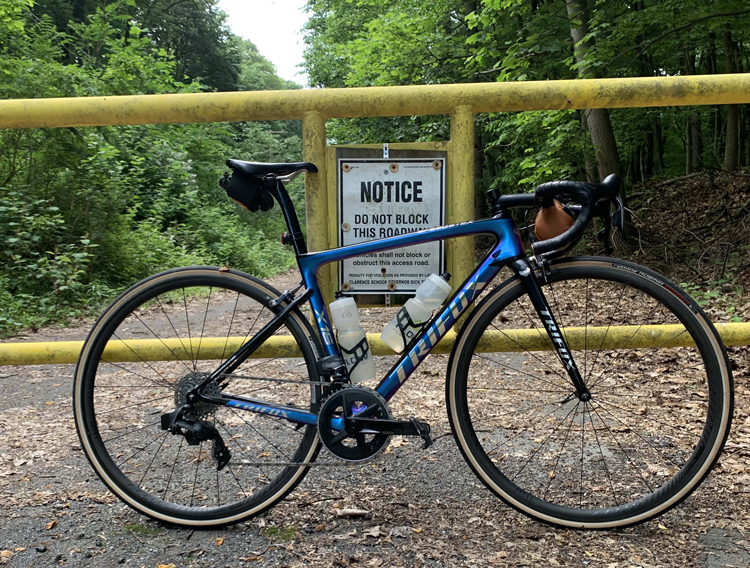
By focusing on these elements, you can choose a road cycle frame that not only fits your riding style but also enhances your overall performance.
For high-quality carbon road bike frames tailored to meet these criteria, check out TRIFOXBIKE's offerings at TRIFOXBIKE Carbon Road Bike Frames. Embrace the advantages of carbon frames and elevate your cycling experience to new heights.
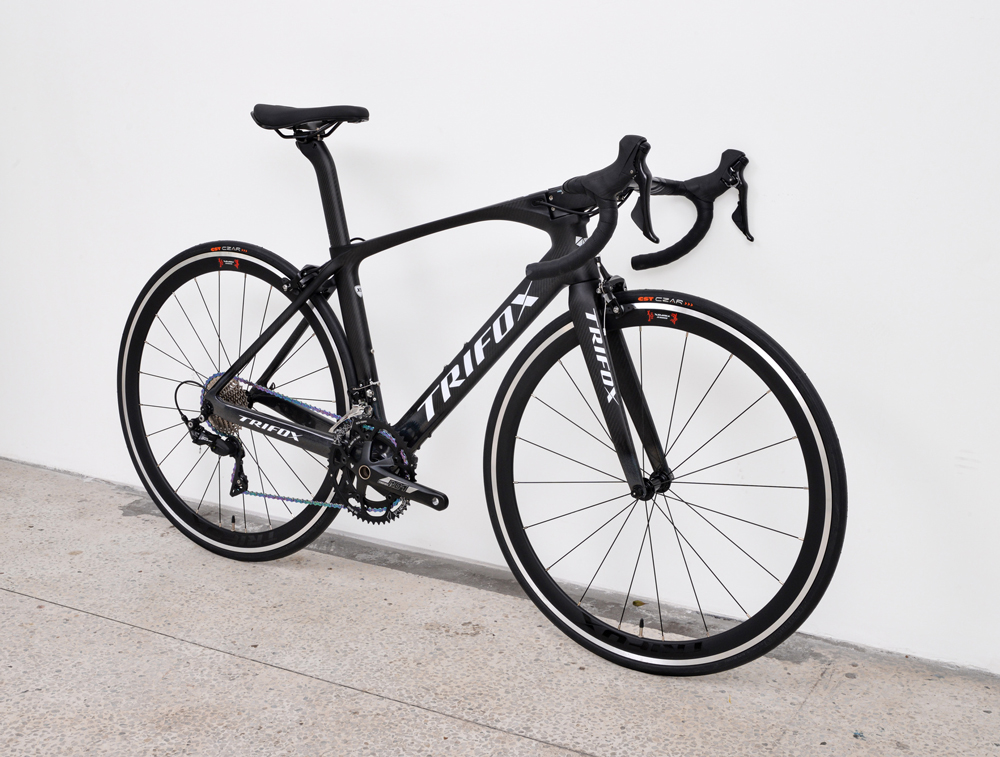
Selecting the right aero road frame can make a significant difference in your cycling performance, especially when it comes to speed. An aero frame is designed to minimize air resistance, allowing you to cut through the wind more efficiently. Here’s how to choose the best aero road frame to maximize your speed.
1. Understand the Benefits of Aero Frames
Aero frames are engineered to reduce drag, the force that slows you down as you move through the air. These frames feature streamlined tube shapes and integrated components that help you maintain higher speeds with less effort. The Trifox X12 Carbon Road Bike Frame is an excellent example, designed with aerodynamics in mind to enhance performance.
2. Look for High-Quality Materials
The material of the frame plays a crucial role in its performance. Carbon fiber is the go-to material for high-end aero frames due to its lightweight and stiff properties. The Trifox X12, made from premium T800 carbon fiber, provides an optimal balance between weight and stiffness, ensuring that every watt of power you generate is efficiently transferred to the road.
3. Consider Frame Geometry
Frame geometry affects how the bike handles and how comfortable it is over long distances. Aero frames often have a more aggressive geometry compared to traditional road frames. This means a lower front end and a more extended reach, putting you in a more aerodynamic position. Ensure that the geometry of the frame you choose matches your riding style and flexibility.
4. Evaluate Integration Features
Modern aero frames often come with integrated features such as hidden cables, aerodynamic seat posts, and internal routing systems. These integrations not only improve aerodynamics but also provide a sleeker look. The Trifox X12 excels in this area with its fully internal cable routing and integrated design, minimizing turbulence and enhancing speed.
5. Check Compatibility
Ensure that the aero frame you choose is compatible with your existing components or the new ones you plan to install. The Trifox X12, for instance, is designed to work seamlessly with V-brake systems and other standard components, making it a versatile choice for many cyclists.
6. Test Ride If Possible
If you have the opportunity, test ride a few different aero frames before making your decision. This hands-on experience can give you valuable insights into how each frame feels and performs under real-world conditions.
7. Seek Expert Advice
Consult with experienced cyclists or professionals at your local bike shop. They can offer recommendations based on your specific needs and preferences, helping you make an informed decision.
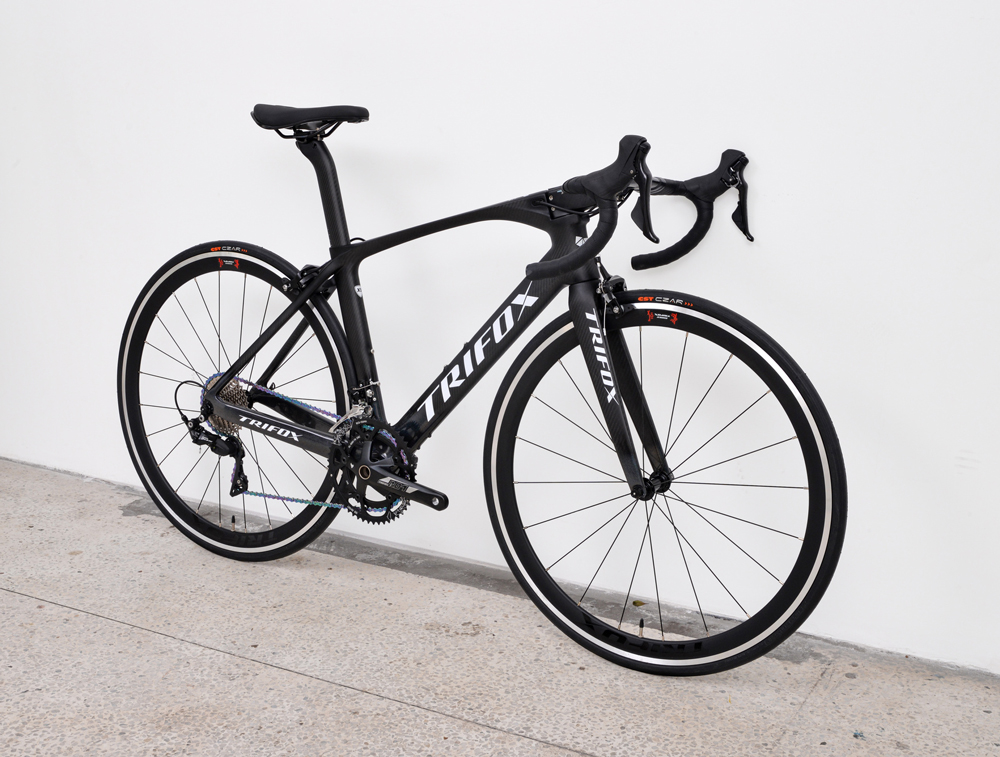
By considering these factors, you can choose an aero road frame that maximizes your speed and enhances your overall cycling experience. The Trifox X12 Carbon Road Bike Frame is a top contender, offering advanced aerodynamics, high-quality materials, and seamless integration to help you achieve peak performance.
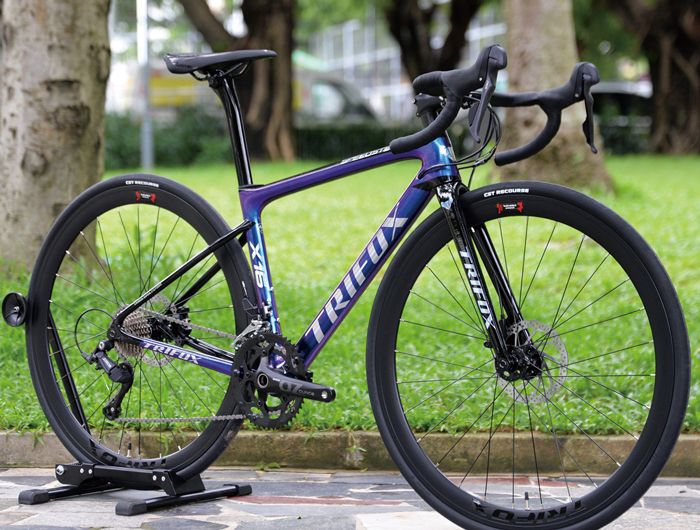
Investing in an ultra-light road bicycle can be a game-changer for any cyclist, whether you're a seasoned racer or a weekend warrior. But what exactly makes these bikes worth the investment? Let's break it down.
1. Speed and Performance
The primary advantage of an ultra-light road bicycle is its enhanced speed and performance. Lighter bikes require less energy to accelerate and maintain high speeds, making them ideal for competitive racing and long-distance events. The reduced weight not only aids in quicker sprints but also improves climbing efficiency, allowing you to tackle hills with greater ease.
2. Maneuverability and Control
An ultra-light frame significantly boosts maneuverability, giving you more precise control over your bike. This is particularly beneficial in tight corners, descents, and technical sections of your ride. Enhanced control leads to improved safety and confidence, letting you focus on pushing your limits.
3. Reduced Fatigue
Carrying less weight means exerting less effort, which translates to reduced rider fatigue. Over long rides, this can make a substantial difference in your endurance and overall enjoyment. By conserving energy, you can ride longer and recover faster.
4. Aesthetic and Technological Innovation
Ultra-light road bicycles often feature cutting-edge technology and sleek designs. Materials like carbon fiber offer not just a reduction in weight, but also superior strength and vibration dampening properties. These bikes are a blend of form and function, catering to cyclists who appreciate both aesthetics and performance.
Top Pick: Trifox Ultra Light Road Bicycle
For those serious about upgrading their ride, consider the Trifox Ultra Light Road Bicycle. Known for its exceptional build quality and innovative design, this bike offers all the benefits of ultra-light cycling while maintaining durability and style.
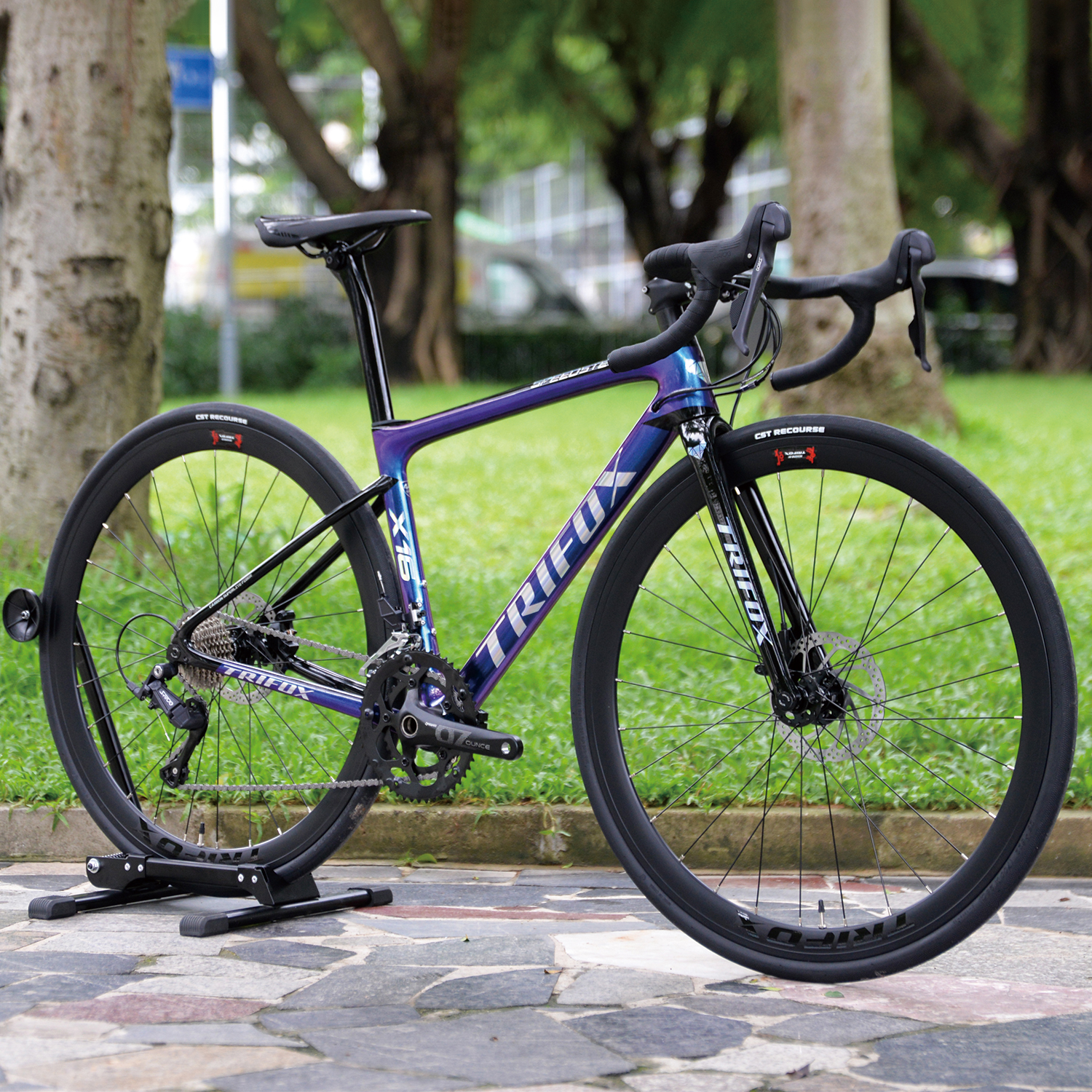
Conclusion
An ultra-light road bicycle is more than just an upgrade; it's an investment in speed, control, and riding pleasure. Whether you're aiming to shave seconds off your race time or simply enjoy a more effortless ride, the benefits are undeniable. Make the leap to an ultra-light road bike and experience the difference it can make on every ridd.
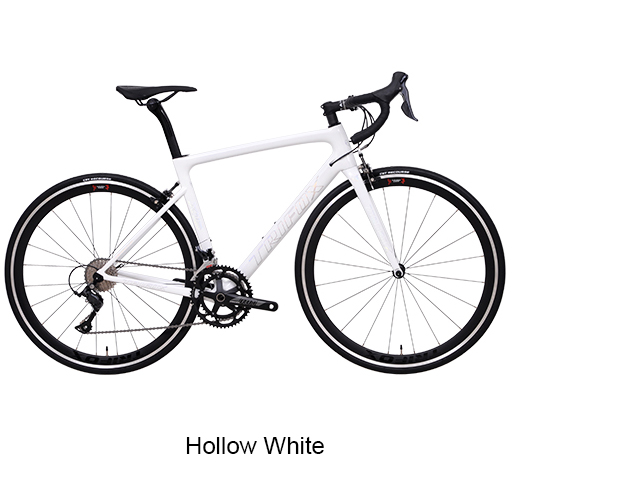
Tuning up your road bike is essential for maintaining peak performance and ensuring a smooth, efficient ride. Regular maintenance can also extend the lifespan of your bike. Here’s a step-by-step guide to tuning up your road bike for optimal performance.
First, start with a thorough cleaning. Dirt and grime can affect the efficiency of your components. Use a gentle bike cleaner, water, and a soft brush to clean the frame, chain, gears, and other parts. This not only makes your bike look good but also helps you spot any potential issues.
Next, check the tires. Ensure they are properly inflated to the recommended pressure, which can usually be found on the tire sidewall. Inspect for any cuts, wear, or embedded objects that might cause a flat. If your tires are worn out, consider upgrading to high-quality options available on [Trifox Road Bikes].
The drivetrain is crucial for smooth gear shifting and overall performance. Start by inspecting the chain for wear. A worn-out chain can damage the cassette and chainrings. Use a chain checker tool to measure wear and replace if necessary. Clean and lubricate the chain to ensure smooth operation.
Check your brake system thoroughly. Inspect the brake pads for wear and replace them if they are too thin. Ensure the brake cables are in good condition and adjust the brake tension if needed. Properly functioning brakes are essential for safety and control.
Next, adjust the gears. Use the barrel adjuster to fine-tune the derailleur's position, ensuring smooth and precise shifting. If the shifting is still not perfect, consider taking your bike to a professional for a detailed adjustment.
Inspect all bolts and screws. Use a torque wrench to ensure that everything is tightened to the manufacturer’s specifications. Over-tightening or under-tightening can lead to component failure.
Lastly, check the alignment of your wheels. Spin each wheel and observe if it wobbles side-to-side. If you notice a wobble, it might need truing. This is best done by a professional unless you have the right tools and expertise.
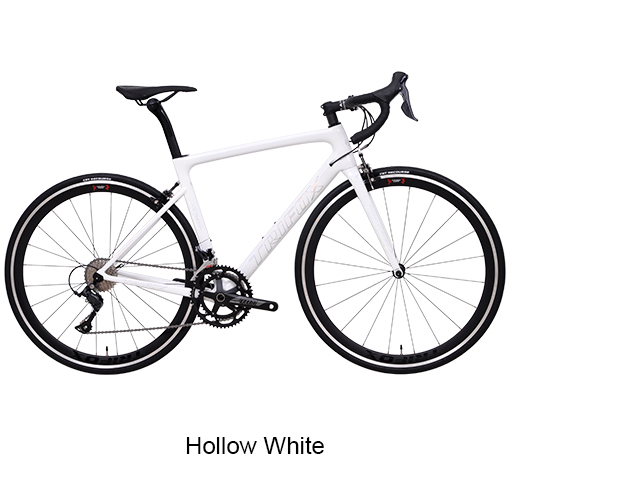
In conclusion, regular tune-ups are key to keeping your road bike performing at its best. By following these steps, you can enjoy smoother rides and extend the life of your bike. For high-quality components and road bikes, visit [Trifox Road Bikes]. Happy riding!
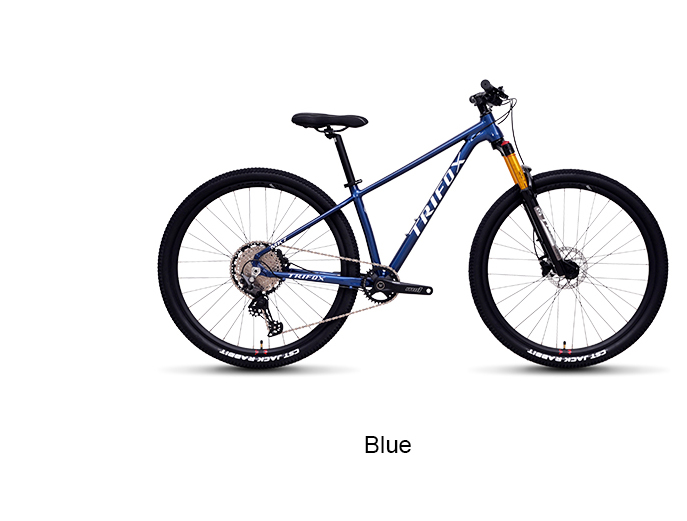
Choosing the best alloy frame for your bike is a crucial step in ensuring a comfortable and efficient ride. alloy frames, typically made from aluminum, offer a balance of strength, lightweight, and affordability.
First, consider your riding style. Are you an avid mountain biker, a road cyclist, or a commuter? Each discipline has specific requirements that an alloy frame can address. For mountain biking, durability and shock absorption are key. The [Trifox Aluminum Mountain Bikes]offer robust construction ideal for rugged terrains. On the other hand, road cyclists might prioritize lightweight and aerodynamics, which aluminum frames also cater to effectively.
Next, think about the frame geometry. The shape and angles of the frame can affect your riding posture and comfort. Mountain bikes generally have a more relaxed geometry, providing better control on rough trails. Road bikes feature a more aerodynamic geometry, placing the rider in a forward-leaning position for speed efficiency.
Another essential factor is the frame size. An incorrectly sized frame can lead to discomfort and potential injury. Measure your inseam and use sizing charts provided by manufacturers like Trifox to find the right fit. Most brands provide detailed guides to help you choose the correct frame size based on your height and riding style.
Additionally, check the weight of the frame. One of the advantages of alloy frames is their lighter weight compared to steel. This makes them easier to handle and maneuver, especially during climbs. However, ensure that the reduced weight doesn't compromise the frame's strength and durability.
Lastly, consider your budget. Alloy frames are generally more affordable than carbon fiber, making them an excellent choice for those looking for quality without breaking the bank. The [Trifox Aluminum Mountain Bikes]offer various options that combine performance and value.

In conclusion, choosing the best alloy frame for your bike involves understanding your riding needs, selecting the right geometry and size, considering the weight, and staying within your budget. With the right frame, you can enhance your riding experience, whether on rugged trails or smooth roads. Happy cycling!
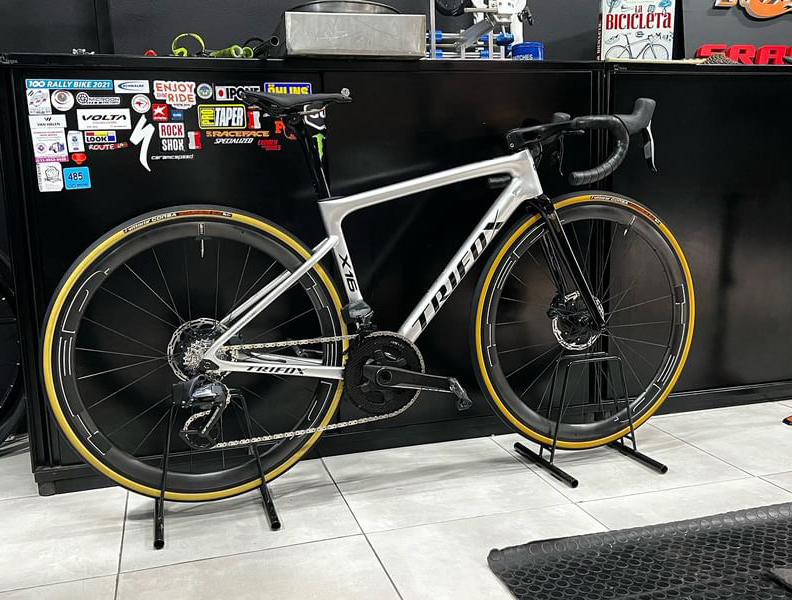
Measuring and adjusting the bottom bracket (BB) height on your road bike is essential for optimizing comfort, efficiency, and performance.
Understanding BB Height
BB height refers to the distance from the ground to the center of the bottom bracket. This measurement impacts your bike's stability, handling, and pedaling efficiency. A lower BB height generally improves stability but may increase the risk of pedal strikes, while a higher BB height offers more clearance but can affect handling.
Measuring BB Height
Tools Needed: Ruler or tape measure, bike stand (optional);Preparation: Place your bike on a flat surface. Ensure the tires are properly inflated and wheels are aligned;Measurement: Measure from the ground to the center of the BB. Note this measurement for reference
Adjusting BB Height
Adjusting BB height involves altering the bike’s components or setup. Here's how:
1. Tire Size
Changing to larger or smaller tires can slightly adjust the BB height. Larger tires raise the BB, while smaller ones lower it. Ensure that any tire changes comply with your bike frame's specifications.
2. Suspension Settings
For bikes with adjustable suspension, altering the suspension settings can impact BB height. Increasing the suspension travel raises the BB, while reducing it lowers the BB. Adjust according to your preferred riding style and terrain.
3. Crank Length
While not directly altering BB height, changing crank length can influence pedal clearance and the overall feel of your ride. Shorter cranks reduce the risk of pedal strikes, effectively “raising” the BB in practical terms.
Final Adjustments and Testing
After making adjustments, take your bike for a test ride. Pay attention to how the changes affect handling, stability, and pedaling efficiency. Fine-tune as necessary to find the perfect balance.
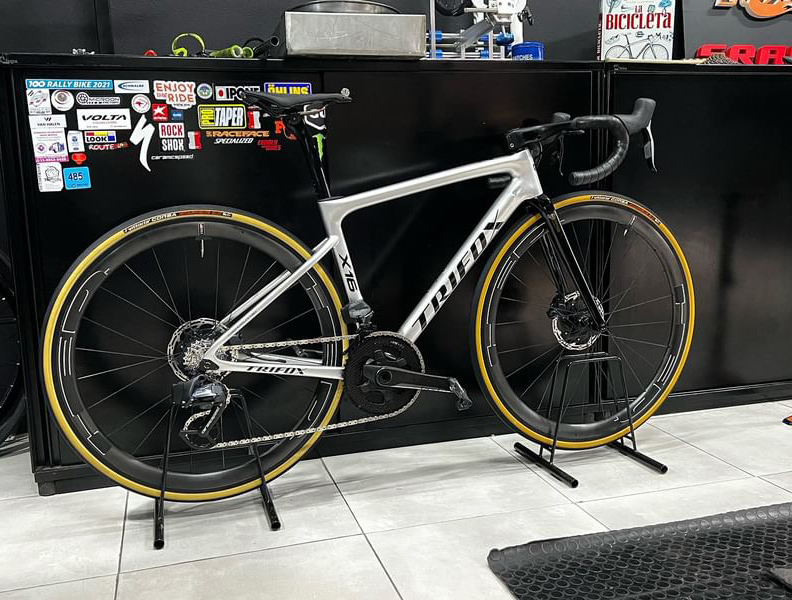
Conclusion
Properly measuring and adjusting your road bike's BB height can significantly enhance your riding experience. Take your time with each step to ensure optimal results. Happy riding!
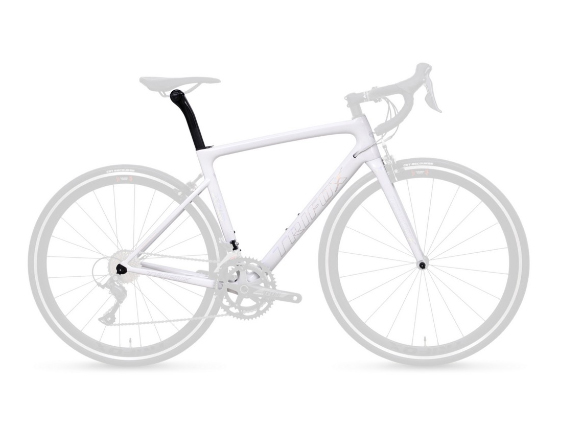
Achieving the perfect fit for your road bike is essential for comfort, efficiency, and injury prevention. A well-fitted bike allows you to ride longer distances with ease while maximizing your performance. Here’s a comprehensive guide to help you get the ideal fit for your road bike.
1. Frame Size Matters
The foundation of a great fit starts with the right frame size. Trifox carbon road bike frames offer various sizes designed to cater to different body types and riding styles. Ensure the frame size corresponds to your height and inseam measurements. A proper fit frame will allow for adequate stand-over clearance and reach.
2. Saddle Height and Position
Setting your saddle height correctly is crucial for efficient pedaling and knee health. When seated, your leg should be almost fully extended at the bottom of the pedal stroke, with a slight bend in the knee. Adjust the saddle position so that your knees align with the pedal axles when viewed from the side. This alignment helps in maintaining an efficient and comfortable pedal stroke.
3. Handlebar Reach and Drop
Handlebar reach affects your posture and control on the bike. You should be able to comfortably reach the handlebars without overextending or feeling cramped. The handlebars should be set at a height where you can maintain a slight bend in your elbows, promoting a relaxed upper body position. The drop from the saddle to the handlebars should correspond to your flexibility and riding style—less flexible riders may prefer a smaller drop.
4. Cleat Positioning
If you use clipless pedals, proper cleat positioning is key. Align the cleats so that the ball of your foot is directly over the pedal axle. This positioning ensures optimal power transfer and reduces strain on your knees.
5. Fine-Tuning
Even after setting up the basics, fine-tuning is often necessary. Adjustments like saddle tilt, handlebar angle, and stem length can make significant differences in comfort. Small tweaks can always be made based on how you feel during your rides.
6. Professional Bike Fitting
For the ultimate fit, consider getting a professional bike fitting. An expert can analyze your body mechanics and make precise adjustments to optimize your bike fit. This service is especially beneficial for competitive cyclists or those who experience discomfort despite making basic adjustments.
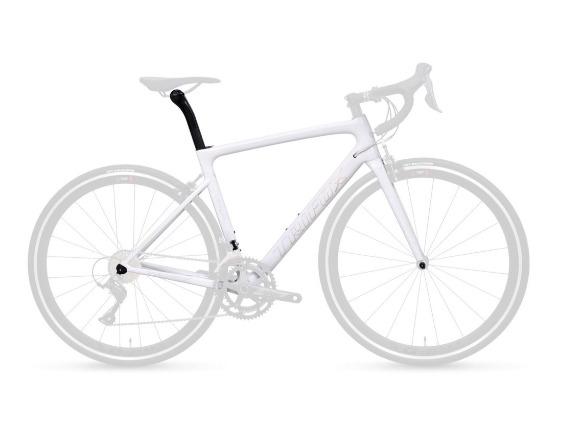
Conclusion
Achieving the perfect fit for your road bike involves careful consideration of frame size, saddle height and position, handlebar reach and drop, and cleat positioning. Regular fine-tuning and professional fittings can further enhance your comfort and performance.
For high-quality frames that can be adjusted to meet your specific needs, check out the Trifox carbon road bike frames. With the right fit, you'll enjoy a more comfortable, efficient, and enjoyable ride every time.

























































